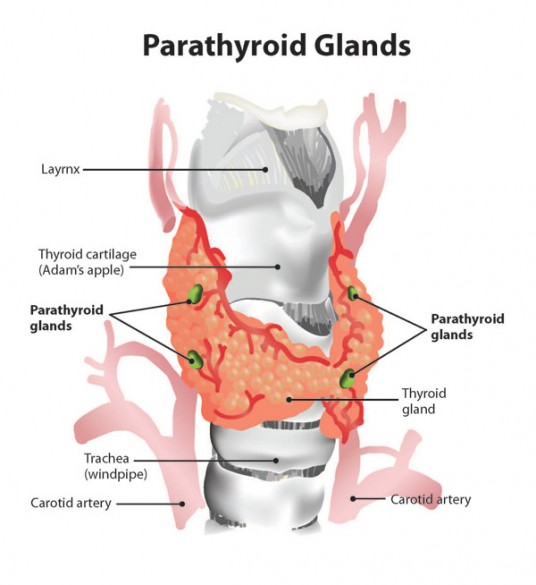Discovery of parathyroid glow promises to reduce endocrine surgery risk
Project begins with curiosity of first-year surgery resident
 The story of discovery began in 2007 when Lisa White, a first-year resident in the Vanderbilt surgery department, participated in her first neck surgery. “It was a very difficult case,” White said. “We were looking for the parathyroid glands and they were very hard to find, although we finally did find them. After the surgery was over, I decided that we really need a better way of identifying parathyroid tissue.”
The story of discovery began in 2007 when Lisa White, a first-year resident in the Vanderbilt surgery department, participated in her first neck surgery. “It was a very difficult case,” White said. “We were looking for the parathyroid glands and they were very hard to find, although we finally did find them. After the surgery was over, I decided that we really need a better way of identifying parathyroid tissue.”
This conclusion led White to conduct a literature search of the research that has been conducted on the basic physiology and biochemistry of the parathyroid. In the process she came across a paper written by Mahadevan-Jansen with another intern that described an optical technique that can detect liver cancer.
“I thought that if such a technique could detect the difference between normal and cancerous liver tissue, surely it could tell two different types of tissue apart,” White said. So she decided to pay Mahadevan-Jansen a visit.
“One afternoon there was a knock on my door. It was Lisa and she asked me about methods for detecting the parathyroid,” said Mahadevan-Jansen, whose research centers on the use of optical techniques for the detection of diseased tissue. “I was interested, particularly because the maternal side of my family has a history of thyroid problems. So I asked her if she would like to check it out.”
Initial attempts didn’t work
White agreed and they began working together even though they didn’t have any funding to support the project. They recruited Phay, who was an attending endocrine surgeon at the time and had access to animal tissue from other experiments being conducted on campus. They tried several different optical techniques, but none of the methods revealed anything distinctive about parathyroid tissue.
Finally, Mahadevan-Jansen decided to try a technique called Raman spectroscopy that fingerprints different organic molecules by subtle changes in the color of reflected light. The effect is very weak and difficult to measure.
When they put thyroid tissue in the instrument, they got a small signal. When they inserted parathyroid tissue, however, the detector saturated. This was totally unexpected because most biological fluorescence takes place in the ultraviolet and visible ranges. Biological molecules rarely fluoresce in the infrared region of the spectrum.